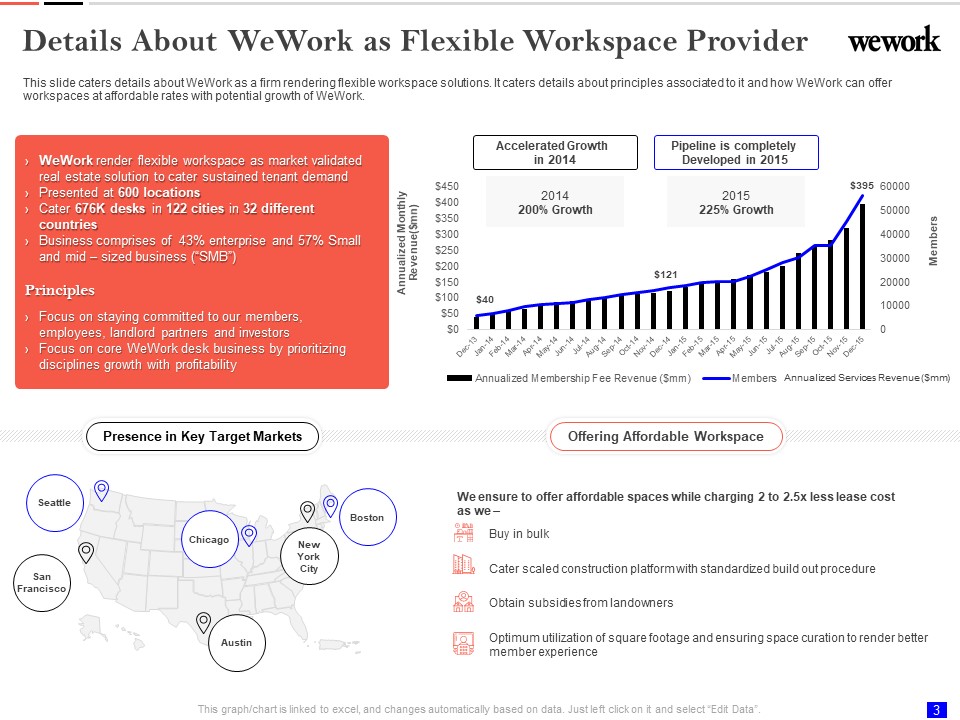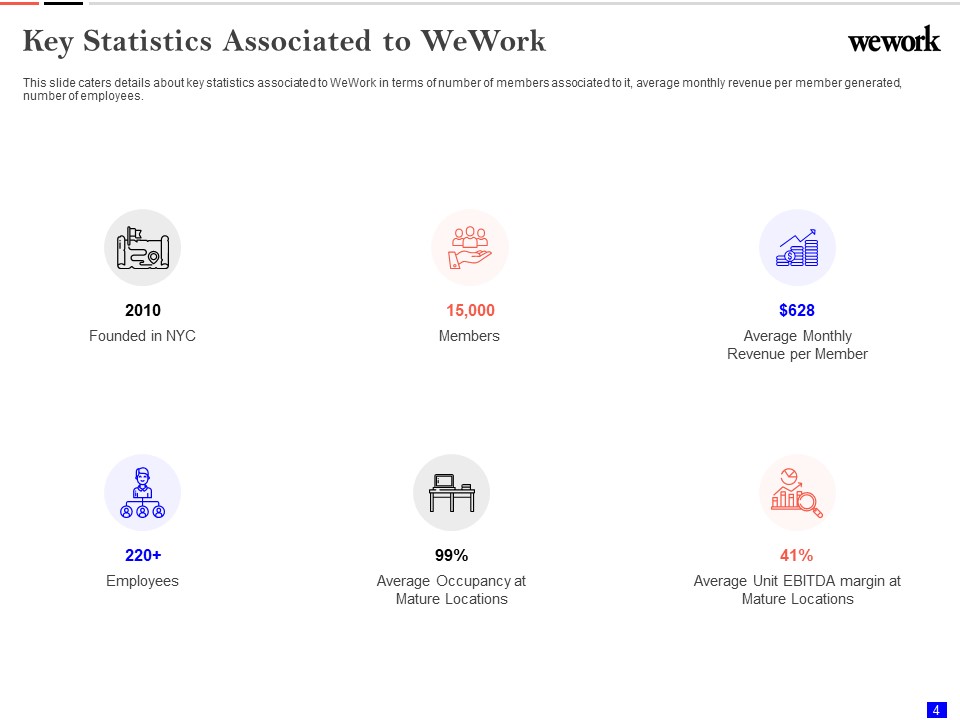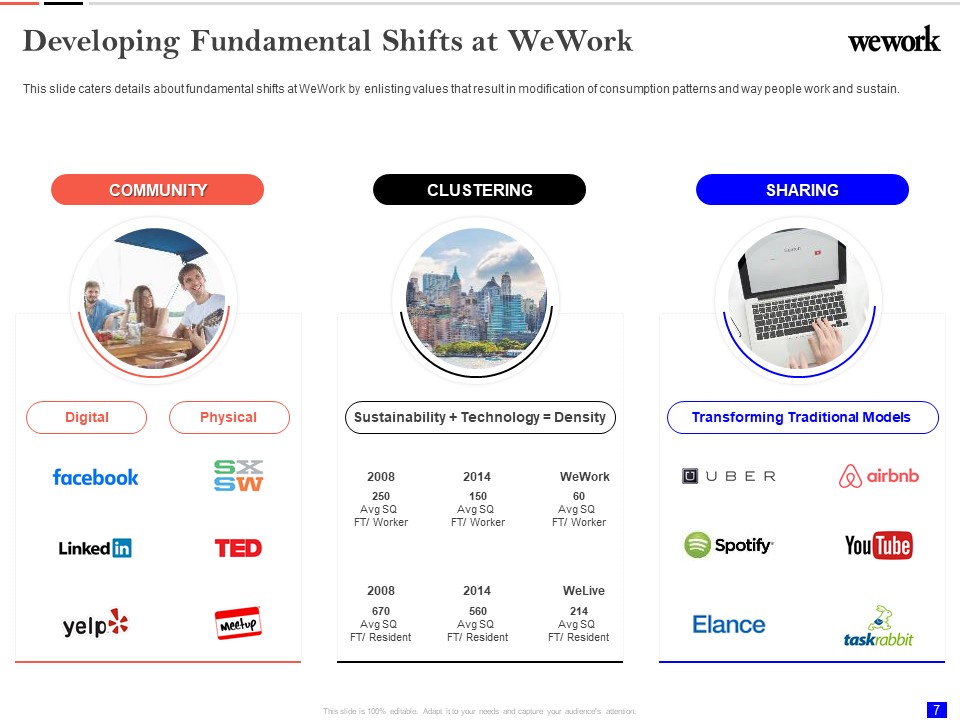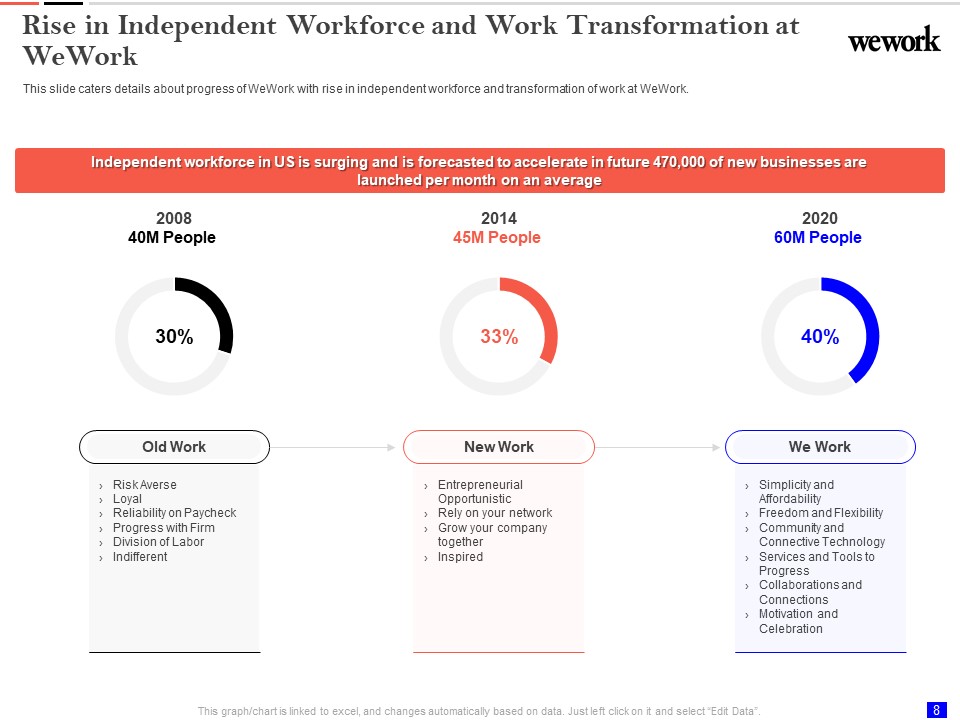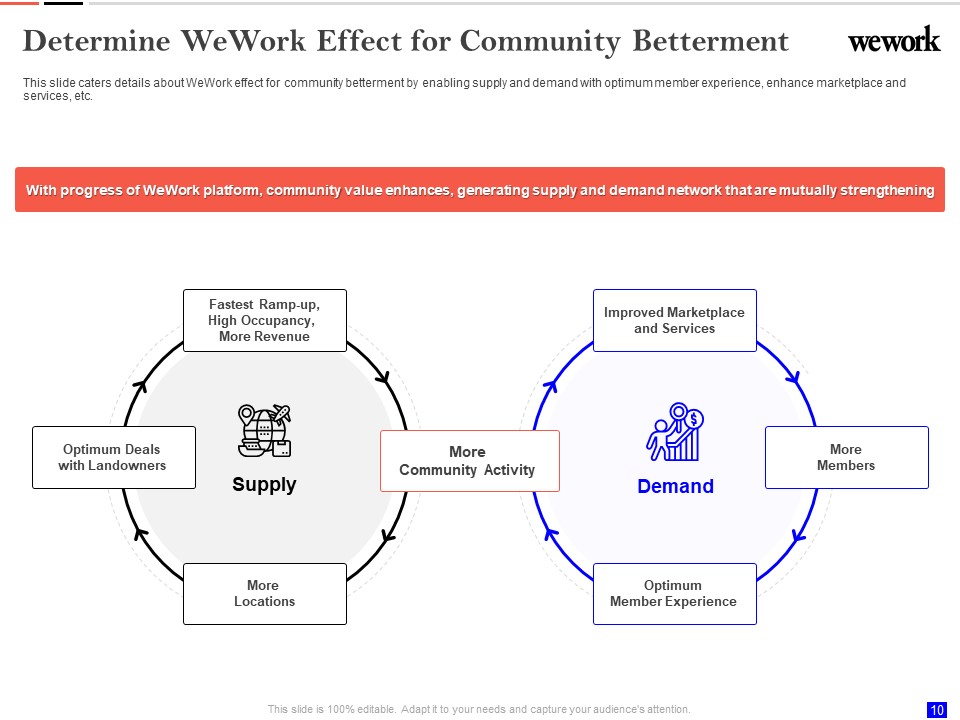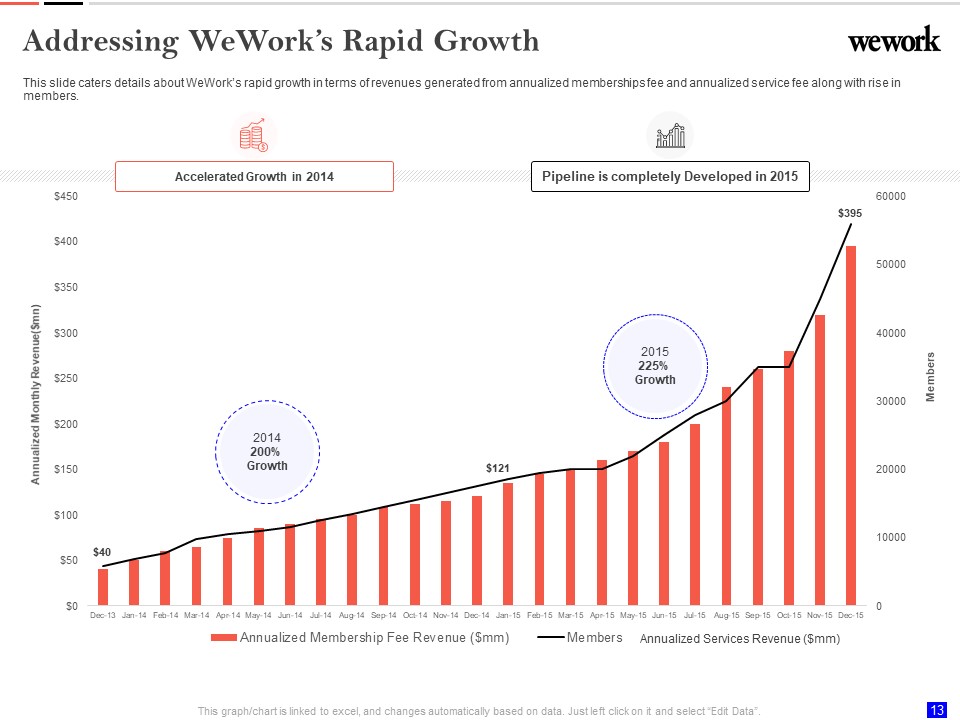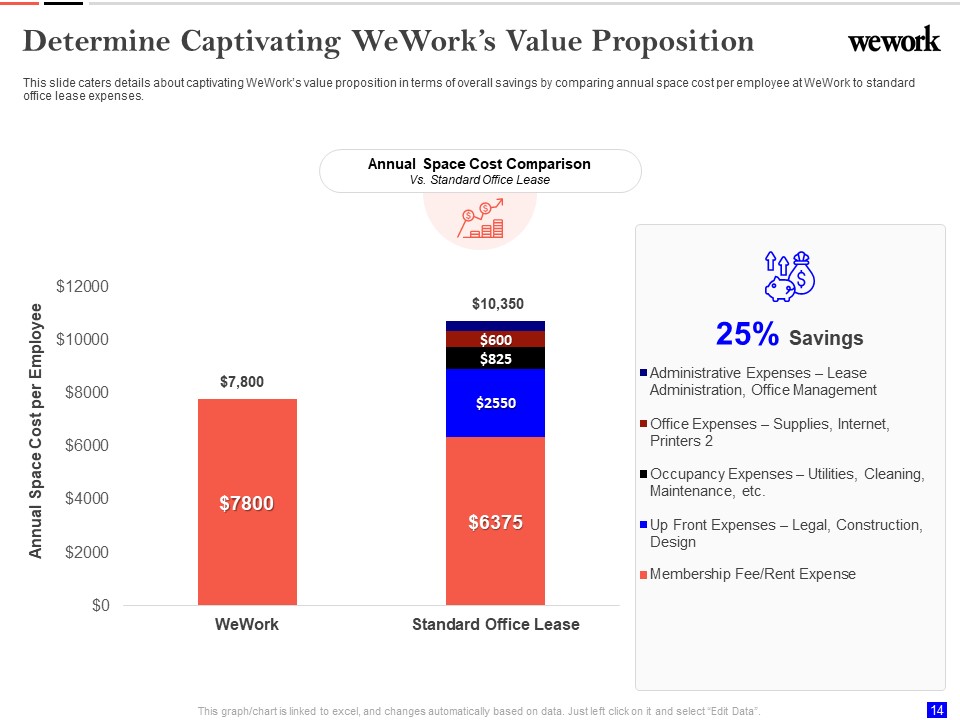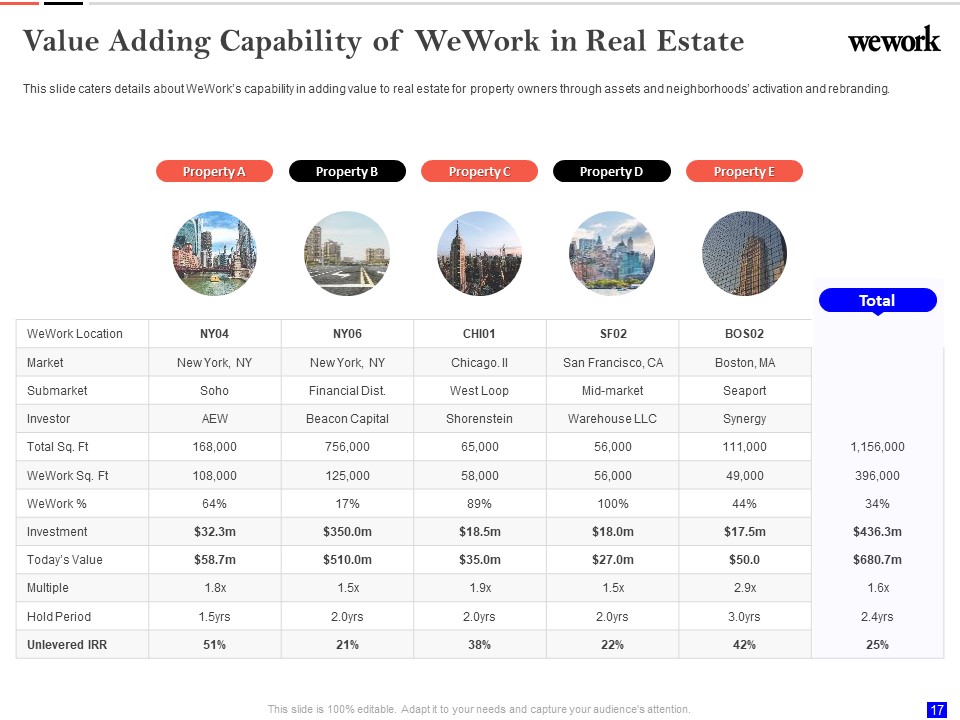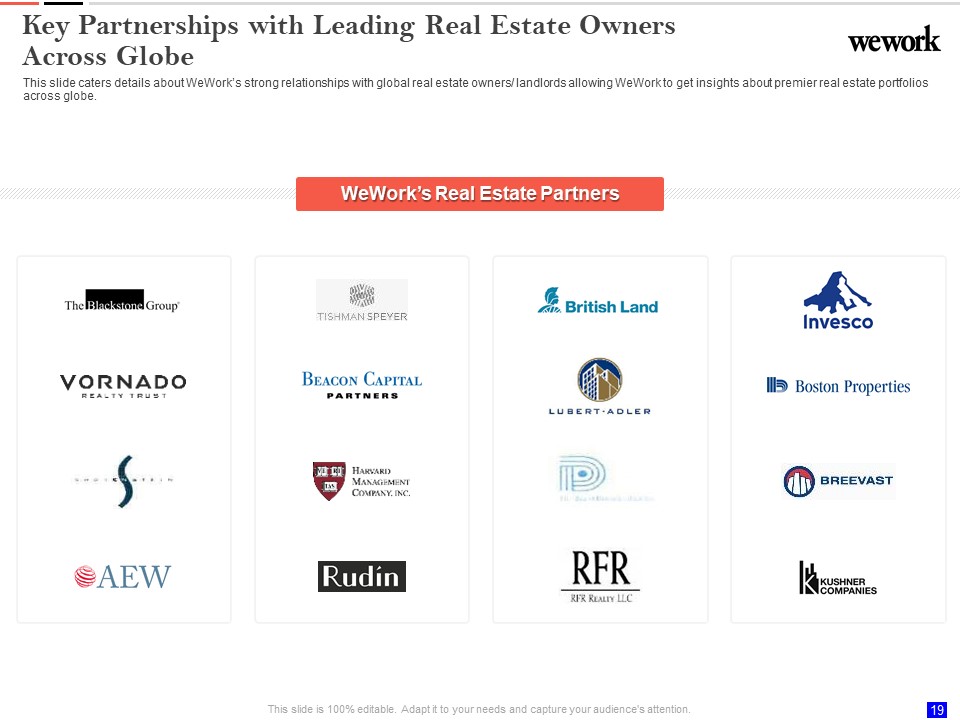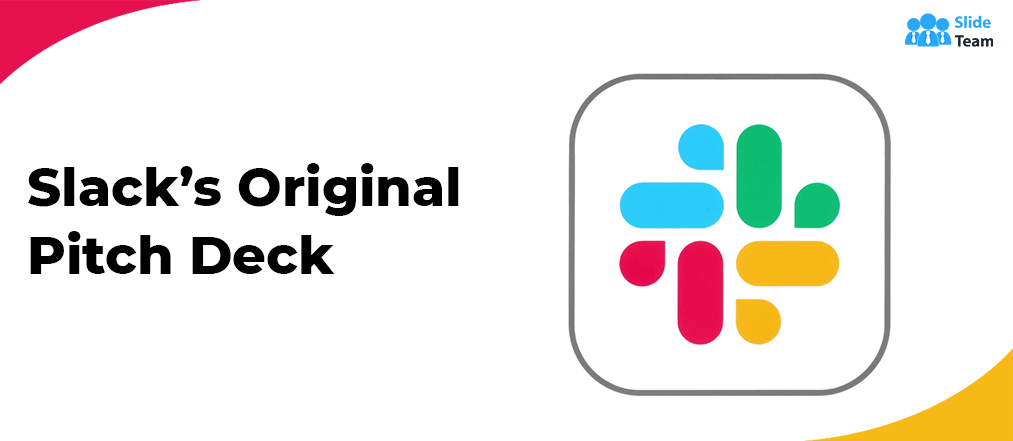WeWork — An American Commercial Real Estate Company — took the concept of monotonous shared office space to a whole new level of excitement.
Founder Adam Neumann with co-founder Miguel McKelvey offered an aesthetically-pleasing environment for startups and freelancers with add-ons such as "Kombucha On Tap."
Today, WeWork is a high-valued unicorn with a Peak Valuation of $47 Billion.
WeWork has tasted immense success, setting up their shared offices in new locations across the globe.
As per the recent data, there are approx 3000 clients of WeWork, including top industry names such as American Express and Merck.
They also offer packages to freelancers starting as low as $45 per desk for a day.
How Did WeWork Start Out?
WeWork is an American company that provides shared workspaces for startups, entrepreneurs, and freelancers.
The company operates internationally with 246 locations in many countries.
WeWork has become one of the biggest office-sharing companies globally, and it also serves as an investor and landlord for physical properties.
How Did WeWork Start Out?
WeWork was founded in 2010 by Adam Neumann and Miguel McKelvey.
Before starting WeWork, Neumann was frustrated that he couldn't easily find shared office space. McKelvey noticed this problem when he attended a design conference in New York.
Only large companies with adequate funds were able to rent workspace, so not many space options for SMEs.
WeWork's first location was in the space of 350 square feet. The company charged rent on a per desk basis, and each desk had an internet connection.
WeWork still operates under the same format to this day.
Neumann and McKelvey began expanding WeWork in New York City, opening up multiple locations, including one in the Brooklyn neighborhood of Dumbo.
By 2012, WeWork had expanded to San Francisco, Los Angeles, and London. The company set up shared office spaces in different cities but soon started building its properties.
As of May 2018, WeWork operates in 246 locations around the world.
The company has an estimated value of over $20 billion and over $2.9 billion in funding.
How Did WeWork Become So Popular Worldwide?
Gone are those days when the word "Office" was associated with the idea of an enclosed space, filled with cubes and desks, where employees are required to sit all day long in front of a computer screen, no matter how good or bad the weather is outside.
The current trend is making workplaces more open, collaborative, and innovative. It is about facilitating the interaction between employees by introducing places where they feel comfortable moving around, talking to their colleagues, and random people passing by.
It is a significant change from the days when promotion usually meant isolation.
The Evolution of Open Office Plans
Open office plans are not exactly new, and they have been around for decades, even though they only started representing the standard environment in the past decade.
What was once an alternative to the cubicle era has gone on to become mainstream, the idea way of working.
According to several studies, in 2017, 70% of office spaces in the U.S. followed the open layout approach, while 50% of office workers in the U.K. preferred them over any other type of office design.
This mixed reality is a direct result of the decline in manufacturing jobs in the U.S. Suddenly, white-collar professions became all the more important, which prompted employers to abandon old school thinking and come up with new ways of making employees happy.
Even though most of the changes are still focused on allowing employees to express themselves, others simply add comfort by eliminating any sign of discomfort. This, in turn, means that open office plans are slowly but surely becoming more flexible.
And it does not seem to stop there. According to experts, the future of office design is all about creating decentralized workplaces that are more connected to public transport hubs. The idea is to give employees the freedom to work wherever they feel most comfortable, at home or their local coworking space.
And while some companies are already making this dream come true, others are simply rebranding their existing concepts under the "coworking" banner.
The truth is that these offices do not exactly offer anything different compared to what WeWork has in-store for their clients.
Funding History of WeWork
WeWork's funding history includes investments from some of the largest corporations in the world, including JP Morgan, Google, and Fidelity.
In the most recent investment round, they received 1.4 billion dollars from 12 investors, including Softbank(a Japanese investment corporation) and Hony Capital (a Chinese private equity firm).
Below Are the Details of the Funding Rounds:-
Series A:-
- Total of 6.3 million dollars, received in 2010 from 3 investors.
- WeWork is reported to have received around $1 million from their first round of funding. Fidelity and Benchmark Capital were the two most prominent investors, at $900,000 each.
- The total of this round is reported to have been invested in marketing and research, with a relatively small amount being spent on the company's first-ever office space.
- The company is reported to have been valued at over $15 million after this round.
Series B:-
- Total of $10.7 million, received in 2011 from 5 investors-
- RRE Ventures invested the most at around $4.1 million.
- Fidelity and Benchmark Capital both invested around $2.4 million.
- RRE Ventures, FirstMark Capital, Oak Investment Partners, and Safra Catz also participated in this round of funding.
Series C:-
- A total of $32 million was received in 2012 from 7 investors
- Jeremy Stoppelman, Square co-founder and Yelp CEO, invested $6.5 million.
- Fidelity and T Rowe Price both invested around $3.7 million.
- Other investors include angel investor James Joaquin and RRE Ventures.
- This round of funding was used to open WeWork's second space in New York, which featured 9 thousand sq ft.
- This Series C round of funding has valued WeWork at $215 million.
Series D:-
- Total of $37.3 million received in 2013 from 7 investors-
- GIC Special Investments, a Singaporean government investment fund, invested $110 million.
- Fidelity and T Rowe Price both invested around $52.8 million.
- Other investors included: LUN Partners, Sands Capital Ventures, and previous investors, RRE Ventures.
- This round of funding was used to open WeWork's third space in San Francisco, which featured 10 thousand sq ft.
Series E:-
- Total of $42.8 million was received in 2014 from 7 investors.
- Fidelity and T Rowe Price both invested around $12.7 million.
- Other investors include LUN Partners, Sands Capital Ventures, and previous investors, RRE Ventures.
- This round of funding was used to open WeWork's fourth space in New York, which featured 50 thousand sq ft.
- This round of Series E funding has valued WeWork at $5 billion.
- Series F:- Total of $582 million received in 2017 from 12 investors-
- Softbank invested $300 million and later invested an additional quarter of a billion dollars.
- Fidelity and Hony Capital also both invested around $81 million.
- Other investors included: Goldman Sachs, T Rowe Price, and WeWork's previous investors: Benchmark Capital, DST Global, and Valiant Capital Partners.
- This round of funding was to open WeWork's fifth space in New York, which featured 100 thousand sq ft and will house 15 thousand members.
- Previous investors also refused to invest in series F funding, the most recent investment round.
- The valuation of WeWork after this round is estimated at $20 billion.
- WeWork has reported having raised a total of $842.7 million to date.
Tear Down of WeWork's Original Pitch Deck
WeWork's Original Pitch Deck was created to raise funds by convincing investors of the opportunity in the coworking space.
The pitch deck was made to communicate WeWork's vision and provide financial information on the business model.
There are lessons to be learned from the success of WeWork's pitch deck.
Firstly, the founders behind the project were passionate about what they were doing, and they identified a comprehensive problem statement.
Secondly, the presentation was not created for people who already understood the coworking space's business model. Instead, it was designed to convince investors as well as users.
Read on as we learn about the critical slides included in WeWork's investor presentation.
To make a robust impact on your investor, first, understand the distinctness between an #elevatorpitch and #pitchdeck #template.
And then, begin your journey with these designs. 👉🏻 https://t.co/qy7xLHte2t#SlideTeam #PowerPoint #Presentations #PresentationDesigns pic.twitter.com/F5QS5DHuCY
— SlideTeam (@Slideteam_net) January 13, 2022
Click Here to Explore World's Largest Collection of Pitch Decks
Slide 1: Details About WeWork as Flexible Workspace Provider
No slide in an investor deck can be as convincing as this one from WeWork's presentation.
It has a bar graph that showcases the accelerated growth of the company over the past two years (200% in 2014 and 225% in 2015).
An American map defines the vital geographic locations where WeWork operates, such as San Francisco, Austin, Boston, New York City, and more.
On the bottom-right section, WeWork put forth valid reasons that illustrate why they offer affordable workspace, at least 2 to 2.5* less than lease cost.
The final section on the top-left presents the company overview, right from its governing principles to a one-line definition of the WeWork business concept.
Slide 2: Key Statistics Associated with WeWork
This slide-in WeWork funding elevator deck mentions all the necessary statistics associated with WeWork.
These include when the company was founded? How many members are associated with the company? What is the employee strength? Etc.
The slide is 100% editable; you can update and pitch your business specification.
Slide 3: Developing Fundamental Shifts at WeWork
This WeWork slide caters to details about the fundamental shifts. The company enlisted the values that resulted in modifying the consumer pattern and sustainability.
Slide 4: Rise In Independent Workforce and Work Transformation at WeWork
This slide aims to educate prospective investors about the incredible progress of WeWork with regards to the massive surge in the independent workforce in the United States and the transformation of work.
To throw weight behind their claim, WeWork did market research and came up with solid numbers that tell a convincing tale.
Slide 5: Determine WeWork Effect For Community Betterment
The slide explains how the impressive growth of WeWork is beneficial for the corporate community.
WeWork claimed to have enabled more supply and demand in the market and met them with optimum member experience, enhanced marketplace and services, etc.
The visual representation of all such details makes this slide even more exciting and easy to interpret.
Slide 6: Addressing WeWork's Rapid Growth
The slide provides a comprehensive overview of WeWork's sky-rocketing growth over the years.
They have a well-designed bar graph that depicts an explosive growth from $40mm in December 2013 to $395mm in December 2015.
The graph also shares that the growth percentage was 200% in 2014 and 225% in 2015. This graph illustrates the in members along with annualized membership fee.
Slide 7: Determining Captivating WeWork's Value Proposition
This slide demonstrates 25% savings with WeWork over Standard Office Lease in terms of Annual Space Cost Comparison.
They put forth the expenses that contribute to increased costs with Standard Office Lease on the right-hand side.
These include Administrative Expenses, Occupancy Expenses, Up Front Expenses, and Office Expenses.
Slide 8: Value-Adding Capability of WeWork in Real Estate
As the name suggests, this slide presents details about WeWork's value-adding capability in real estate through rebranding, neighborhood activities for property owners.
To make this slide worth looking at, WeWork has come with valid numbers that showcase the surge in the property value, explained through a detailed table.
Slide 9: Key Partnership with Leading Estate Owners Across the Globe
In WeWork's success story, its robust relationships with leading real estate owners worldwide must not be overlooked.
This slide has logos for these leading estate owners such as British Land, Rudin, Beacon Capital Partners, Invesco, Boston Properties, and more.
Slide 10: Focusing on Monetization of Leveraging Members Base
This slide-in WeWork's original pitch deck provides details about its expanding member base and the company initiatives to add value features with the increasing revenue numbers.
Slide 11: Addressing Progress of Mobile Users
This slide has a graph to visually showcase the increasing number of new and repeat sixers of its mobile application.
The numbers are illustrated from January 2014 to September 2014.
On the bottom half of this slide, WeWork has rounded up the key insights from the graph, such as +122% increase in WeWork members, +650% Mobile Application Users, and +850% Repeat Mobile Application Users.
Slide 12: Addressing Financial Projections of WeWork
The financial projections in the WeWork slide do enough to encourage potential investors to put their money in their business with a detailed progress graph for the next five years.
The WeWork Financial Projections slide is an easy-to-understand breakdown of crucial assumptions such as Income Statements and EBITDA.
Both the table and the bar graph simplify all the crucial financial information for the potential investors.
Slide 13: Addressing Communities for Future
This slide presents information about the communities that WeWork has created at different locations in collaboration with WeLive.
These include Crystal City in Washington DC and 110 Wall Street in New York City.
Slide 14: Details About Upcoming Large Scale Modern Campuses Designed by WeWork
The slide provides details of the large-scale modern campuses that WeWork has designed.
This slide has a dedicated section on the left-hand side for the Project Overview.
WeWork also mentions the Project Developers, Tenants, and Project Financials.
Slide 15: Details About the Leadership and Vision Team at WeWork
WeWork's Leadership and Vision Team, include Chief Financial Officer, Co-Founder+Chief Executive Office, Chief Product Officer, and other Key Members introduced through this slide.
This slide mentions their names and professional snapshot, and designation in the organization.
Download WeWork's Original Pitch Deck
We hope you enjoyed this story behind WeWork's success as much as we did.
WeWork's original pitch deck is one of the best examples we can find as inspiration to draft a captivating and exciting presentation.
The slide deck is simple, but they have an overarching theme for each section that flows seamlessly through their slides. They also use minimal text throughout the presentation, making it easy for viewers to focus on what matters most.
Download the free WeWork PDF.
If You Want More Information About Our Services or Need Help With Your Marketing Strategy, Please Contact Us Today at 408-659-4170 or [email protected].
Click Here to Explore World's Largest Collection of Pitch Decks


![The Founding Story Of WeWork And Its Original Pitch Deck [Free PDF Attached]](https://www.slideteam.net/wp/wp-content/uploads/2022/01/Banner_design_184b-1013x441.png)


 Customer Reviews
Customer Reviews


